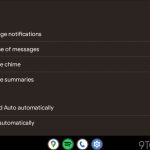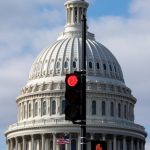First modification:
The US economy shrank at an annual rate of 0.9% between April and June, the Bureau of Economic Analysis estimated on July 28, 2022. Two consecutive negative quarters is condemned by economists as a technical recession, but the Joe Biden administration, the Treasury and the Federal Reserve affirm that the definition of a recession does not fit the current reality of that country.
No clear view. The United States plunges into the territory that economists define as a technical recession, when the Gross Domestic Product contracts two quarters in a row, although a term rejected by the Joe Biden government, which clings to other data, such as employment, and has the discussion to a semantic war.
The contraction of 0.2% of the gross domestic product in the second quarter compared to the previous one woke up the Government, which ventured to counteract the data with its optimistic speech, although experts consulted fear that there may be a recession scenario that is consolidated at the end of year.
“I think we should avoid a semantic battle,” US Treasury Secretary Janet Yellen said this week, while evaluating the GDP data.
So, although the country would be in a technical recession according to traditional economics, for the White House, the Federal Reserve and many analysts, the definition of a recession does not fit, at least for now, the reality of the country.
“When you look at the economy, job creation continues and household finances remain solid,” said Yellen, who recalled the authority to define a recession is the National Bureau of Economic Research, NBER, who will rule in the next weeks.
The body says that the recession “involves a significant decrease in economic activity that spreads throughout the economy and lasts more than a few months” and addresses three criteria, “the depth, the diffusion and the duration” of that economic fall.
“To truly speak of a recession, we would have to see the economy experience a significant decrease in economic activity, which influences the entire economy and not just some sectors,” said Jorge Hernando García Castro, an expert in Financial Markets.

Soft landing, the Fed’s challenge
According to García, “the challenge facing the US economy is to find a soft landing. That is, a slowdown in the economy that manages to curb prices, but without triggering a recession.
Despite attempts by the US Federal Reserve, annual inflation in June hit a new 40-year high: 9.1%. The United States continues to cling to the strength of its labor market, but this could be affected in the coming months and the recession, according to experts, could inevitably arrive in the second half of the year.
“Given high inflation, ongoing supply chain issues and falling confidence, I’d say a recession is likely to be recognized later this year,” said Charles Lichfield, an economist at the Atlantic think tank. Council.
An idea seconded by Edward Moya, from the firm Oanda, warning that the labor market “is cooling down and consumption is falling” although both remain in “positive territory”. Moya considers that “it is probable that the economy enters a recession at the end of the year or the beginning of the next.”
Recessions rarely come when unemployment, which in the United States is currently at a half-century low of 3.6%, is declining. The economy is not usually in a recession if almost everyone who wants a job has one.
with EFE








![[Img #74675]](https://thelatestnews.world/wp-content/uploads/2024/12/They-discover-a-new-class-of-X-ray-sources-in-the-150x150.jpg)



Add Comment